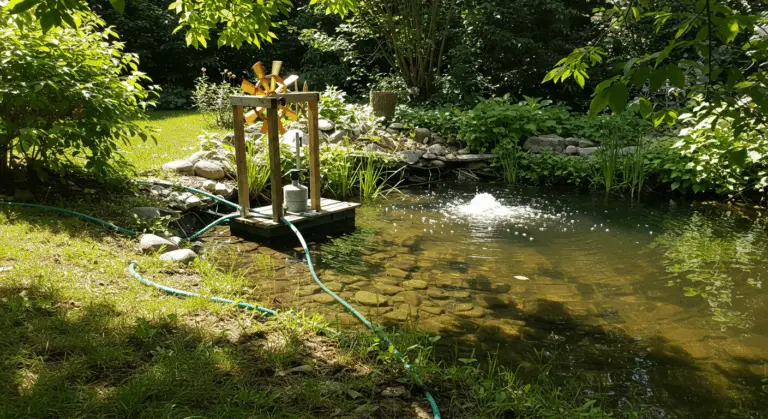Understanding Mice Infestations – Signs and Causes
Recognizing a mouse infestation early can save you significant trouble and expense. These small invaders rarely show themselves directly. Instead, they leave behind telltale signs. The most obvious? Droppings – small, rod-shaped, black pellets measuring 1/8 to 1/4 inch long. You’ll find these near food sources, along baseboards, inside cabinets, or hidden in quiet pathways where mice feel safe.
Beyond droppings, watch for gnaw marks on furniture, food packaging, electrical wires, and structural elements. Mice possess continuously growing incisors that demand constant chewing to maintain manageable length. This constant chewing damages your belongings and creates real fire hazards when they gnaw through electrical wiring.
The sharp, ammonia-like smell from mouse urine intensifies as infestations worsen – another unmistakable warning sign. Additionally, listen for scratching sounds in walls, ceilings, or floors, particularly at night when mice are most active.
These opportunistic rodents pursue three fundamental necessities:
Seasonal shifts, particularly autumn’s arrival and winter’s approach, frequently trigger mouse invasions. As outdoor temperatures plummet and food sources dwindle, these creatures seek indoor refuge. Knowing these warning signs and causes helps you create effective, long-term humane removal and prevention plans.
Effective Non-Lethal Methods to Remove Mice
Humane mouse control includes several proven, non-lethal methods. These gentle approaches focus on deterrence, capture-and-release techniques, exclusion tactics, and sanitation practices – all designed to encourage mice to relocate without causing harm.
For stubborn or severe infestations, consider consulting professionals who specialize in humane pest control. Avoid poison baits entirely, as they cause suffering and pose serious risks to children, pets, and local wildlife.
Humane Traps – How They Work
Humane mousetraps capture mice without inflicting harm. They attract mice with appealing bait into secure chambers from which escape becomes impossible until you release them.
Two primary humane trap designs dominate the market:
-
Box-style traps: These feature one-way doors that close behind the mouse once it enters.
-
Cage-style traps: These use a trigger mechanism, often a pressure plate, to trap the mouse.
Both designs safely contain the mouse until you can relocate it to a suitable outdoor environment, typically at least a quarter-mile from your home to prevent its return.
Creative DIY enthusiasts can craft surprisingly effective humane traps using common household items:
-
Bucket and Stick Trap: A ramp leads to a baited stick balanced on the rim of a bucket. The stick pivots when the mouse walks on it, dropping the mouse safely inside.
-
Glass and Coin Trap: A glass is propped up by a coin over bait. When the mouse disturbs the bait, the coin is dislodged, and the glass traps the mouse underneath.
Humane traps provide benefits beyond just animal welfare. Removing mice alive eliminates decomposition odors that attract other pests and tell other rodents that your home is a good place to live.
When deploying humane traps, check them frequently – at least twice daily – to minimize captured mice’s stress levels. Position traps along walls where mice typically travel and near areas displaying activity signs. Always wear gloves when handling traps to avoid leaving human scent that might deter mice.
Natural Repellents – Essential Oils and More
Essential oils offer a humane, eco-friendly way to repel mice using their very sensitive sense of smell. Strong scents are truly unpleasant to these creatures. Peppermint oil works very well – simply soak cotton balls and position them near entry points and activity areas, refreshing every few days as scents fade.
Peppermint isn’t your only option – these essential oils also prove effective:
-
Clove
-
Lemongrass
-
Rosemary
-
Lavender
For best results, create a potent spray by mixing 20–30 drops of essential oil with 2 cups of water. This non-toxic solution is safe for households with children and pets.
White vinegar’s sharp scent also repels mice effectively. Spray a 1:1 solution of vinegar and water around entry points to create a deterrent barrier. Sprinkling dried herbs like mint, lavender, or bay leaves in cabinets and drawers can also be effective.
Ultrasonic repellers offer a technology-based natural solution. These devices emit high-frequency sounds inaudible to humans yet irritating to mice. While research results are mixed, many homeowners report success when incorporating them into broader strategies. For best results, deploy multiple units throughout your home, especially near suspected entry points and areas showing mouse activity.
Natural repellents work well as prevention or components within integrated approaches. They work best when combined with proper sanitation practices and sealed entry points. This creates a multi-layered defense system that encourages mice to seek alternative shelter without causing harm.
Preventing Future Infestations – Best Practices
Comprehensive prevention strategies target the three fundamental reasons mice invade homes:
-
Access: Openings that allow entry.
-
Food: Easily available food sources.
-
Shelter: Safe places to nest.
By systematically eliminating these factors, you create an environment that naturally discourages mice.
Smart food storage is essential. Store all food, including for pets, in airtight glass or metal containers, as mice can easily chew through original packaging. Clean kitchen surfaces, sweep floors daily, and address spills immediately. Keep garbage in sealed containers and remove it frequently.
Removing nesting spots greatly reduces infestation risks. Clear out storage areas like basements, attics, and garages thoroughly. Replace cardboard boxes with sealed plastic containers – cardboard provides both shelter and nesting material. Clean regularly behind appliances and under furniture, avoiding stacking items directly against walls.
Outdoor maintenance works well with indoor prevention. Trim vegetation to at least 18 inches from your foundation, removing protective cover. Store firewood and building materials at least 12 inches off the ground and 20 feet from your house. Clean up fallen fruit, nuts, and seeds promptly. Consider installing a gravel perimeter around your foundation for added protection.
Regular home inspections catch potential issues before they escalate. This proactive approach, combined with meticulous cleanliness and sealed access points, creates complete defense systems that humanely keep mice at bay.
Sealing Entry Points – Methods and Materials
Sealing entry points effectively requires the right materials and techniques to create truly mouse-proof barriers throughout your home. Begin with thorough flashlight inspections, identifying gaps around pipes, vents, foundation cracks, and utility lines. Pay special attention to junctions where different building materials meet – these areas frequently develop gaps over time.
Steel wool is your main defense against mice due to its gnaw-resistant properties. Pack it firmly into holes before applying permanent sealants. For small to medium openings (¼ to ½ inch), combine steel wool with caulk – silicone-based types work well in areas with temperature changes. Apply caulk generously over steel wool, ensuring complete coverage and smooth finishes that prevent mice from gaining purchase.
Tackle larger gaps around pipes or vents with expandable foam, but reinforce it with hardware cloth or metal mesh first, as mice can chew through foam alone. Cut hardware cloth slightly larger than the opening, secure it in place, then apply the surrounding foam. Once dry, trim excess foam for a neat appearance while maintaining the barrier’s integrity.
Door sweeps and weather stripping are important for sealing gaps beneath exterior doors – a commonly overlooked entry point. Choose metal door sweeps over rubber or plastic versions, which mice can chew through easily. Similarly, replace damaged weather stripping around windows and doors, ensuring zero gaps remain when closed.
Duct tape provides quick solutions for temporary sealing needs or hard-to-reach areas, though consider it a short-term fix until permanent materials can be applied. In basements and crawl spaces, use mortar for foundation crack repairs. Install fine mesh screens over vents and chimney openings to prevent access while maintaining essential airflow.
When sealing entry points, always verify you’re not blocking essential ventilation systems or creating fire hazards. Dryer vents, for instance, require proper vent covers that allow air escape while preventing mouse entry. This thorough sealing approach creates multiple barriers that effectively keep mice out without harm, addressing the root causes of infestations rather than just treating the symptoms.
Using Cats as Natural Deterrents
Cats are among the most natural and effective mouse deterrents. A cat’s mere presence and distinctive scent signals nearby predators, causing mice to avoid areas entirely.
While hunting skills vary greatly between cats – some prove enthusiastic mousers while others show minimal interest – even cats that don’t hunt still provide good deterrent benefits. The predatory pheromones cats naturally emit create invisible barriers that mice instinctively recognize and fear. This biological warning system operates continuously, even when your cat sleeps or remains otherwise occupied.
For best results, grant your cat access to areas where mouse activity has been detected. Basements, storage rooms, and garages – typically prime mouse locations – benefit greatly from regular cat visits. However, ensure these spaces remain safe for your cat by removing potential hazards like toxic chemicals, dangerous equipment, or escape routes.
Considering adoption? Some shelters can help identify cats with strong hunting instincts. Certain breeds often demonstrate superior mousing abilities due to their heritage, including:
-
American Short hair
-
Maine Coon
-
Siamese
Remember that cats require lifelong commitments of care and attention. View mouse deterrence as a delightful side benefit of responsible pet ownership, never the primary adoption motivation.
Conclusion – Summary of Non-Lethal Mouse Control
Effective, humane mouse control requires a complete approach that respects both your home and the animals sharing your space.
Live traps enable safe capture and release. Natural repellents like peppermint oil create scent barriers that make your home unappealing to mice.
For long-term success, methodically seal all entry points using materials like steel wool and caulk – this is the most important preventive step you can take.
Meticulous cleanliness eliminates food sources and reduces clutter, removing key attractants. Additionally, cats can provide a natural deterrent through their predatory presence.
This balanced, humane strategy resolves current issues while providing sustainable, long-term solutions for preventing future infestations. This shows that effective pest control doesn’t require any lethal methods.




